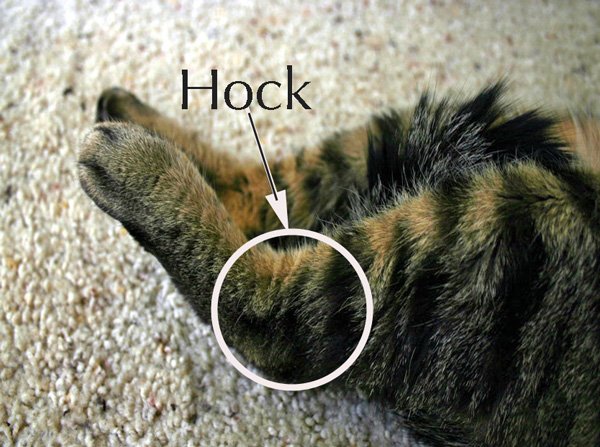
A cat’s gait is one way of interpreting your cat’s mood, her health and mentality. What you can interpret is quite limited but it’s a diagnostic tool which may come in handy from time to time.
You probably know, by the way, that domestic cats walk on their toes which means they are digitigrades. If you click on this link, you can see a comparison between the human forearm and hand and the domestic cat’s foreleg and paw. It is quite an interesting comparison.
They also have a direct register gait which means that the poor marks of the hind paw drop into the paw marks of the forepaw when they are walking. You can read about that by clicking on this link. Because they walk on their toes, declawing is particularly unethical and unacceptable.

CLICK THIS LINK TO READ ABOUT THE CAT’S GAIT.
Staying close to the ground
You have probably seen this. When a cat keeps their body low to the ground they do so to become less visible. They want to be less visible when they are stalking an animal. Alternatively, they feel threatened and are avoiding what they might perceive as a threat from a predator (e.g. another human). In the former situation they are going forward, looking intently at a prey animal. They will move in short bursts and then stop and watch and then continue. In the latter situation they will move continuously with their bodies held low to the ground until they feel secure, perhaps in a hiding position.
At the end of a “low-slung” stalk and before they make that final dash, they may wiggle their butt. This is a mental preparation before that final dart at the prey which is a decisive moment, which can dictate whether they are successful or they fail. If you know sport, such as golf or tennis, you will see sportsmen preparing in a similar way to the tennis serve (ball bouncing) or the golf swing (the golf ‘waggle’). Like I said, it’s a mental preparation.
Unusual gait suggest pain
A healthy cat distributes weight evenly on all four limbs as she walks. We know what that looks like. If a cat is protecting one limb it obviously causes pain. She might not let you touch her leg. In an elderly cat, what comes to mind, is arthritis. In a younger cat, it would probably be due to injury. A classic example would be jumping down from a decent height, perhaps from a fence outside the home if they are allowed outside. Their paw contacts an uneven surface which injures her paw. In an older Maine Coon it might be due to hip dysplasia (bad leg/hip joint). Maine Coons are genetically predisposed to this condition.
Head down, walking on her hocks

The hock is the joint of the hind leg which is between the foot and the leg. The picture below shows you where it is. If she is neither hunting nor slinking away from danger when doing this then it is probably due to illness or pain. One veterinarian, Japan’s leading cat doctor, Dr. Yuki Hattori, says that she may have diabetes when walking on her hocks.

Walking upright and brightly
The classic, healthy cat gait when, for example, greeting their owner would be to walk in a bright manner demonstrating an interest in what is going on around them, with their tail held upright in what is called the “tail-up” position. This is body language which gives the message to the recipient that they are friendly.
SOME MORE ON GAIT:

